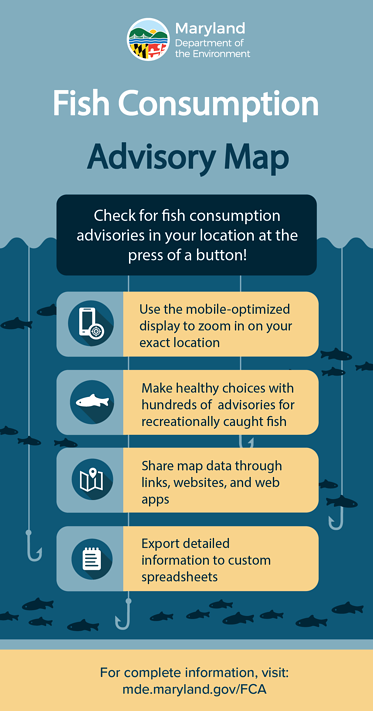Guidelines for Recreationally Caught Fish Species in Maryland
The Maryland Department of the Environment has developed an
interactive map that provides modernized, user-friendly information on fish consumption advisories. A consumption advisory is a recommendation to limit or avoid eating certain species of fish caught from specific water bodies due to environmental factors.
The map, which can be opened on web browsers, allows anglers to see what advisories are in effect in specific waterways. The map is optimized for mobile devices, with a widget that allows users to zoom to their exact location on the map with the press of a button. It is one of the only “clickable” maps for fish consumption advisories in the nation.

